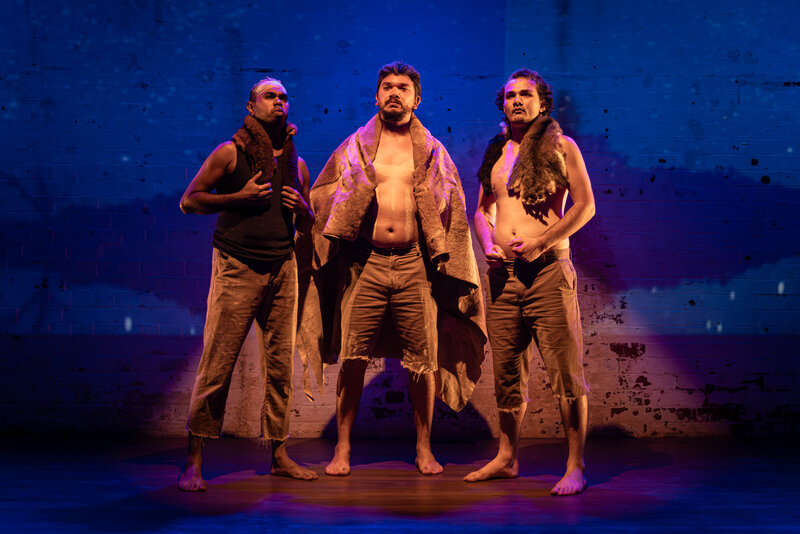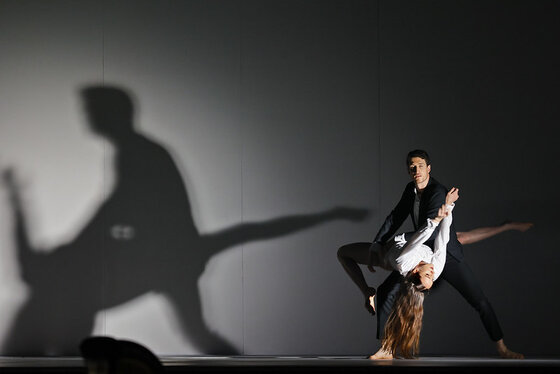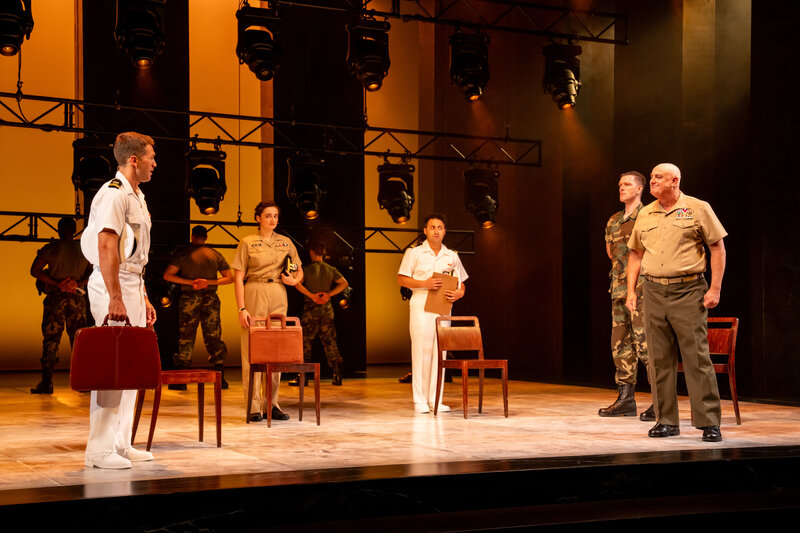A ponderous first half gives way to a bloody whodunit in the second as Quentin Tarantino continues his love affair with violence in The Hateful Eight.
Soon after the Civil War, a stagecoach hurtles through the wintry Wyoming landscape. The passengers, bounty hunter John Ruth (Kurt Russell) and his captive Daisy Domergue (Jennifer Jason Leigh), race towards the town of Red Rock. That is where Ruth, known in these parts as “The Hangman”, will bring Domergue to justice. Along the road, as they try to outpace a blizzard that is closing in on them, they encounter two others. One is Major Marquis Warren (Samuel L. Jackson), a black former Union soldier turned infamous bounty hunter; and the other Chris Mannix (Walton Goggins), a Confederate renegade who claims to be the town’s new sheriff. As the snowstorm hits with full fury, all seek refuge at Minnie’s Haberdashery, a stopover on a mountain pass.
 When they arrive, they’re greeted not by the friendly proprietor but by four unfamiliar faces. Mexican Bob (Demian Bichir) maintains he is taking care of the joint while Minnie is visiting her mother. Also holed up there are Oswaldo Mobray (Tim Roth), who says he is the hangman of Red Rock, along with cowpuncher Joe Gage (Michael Madsen) and Confederate General Sanford Smithers (Bruce Dern). But then all is not as it first appears to be, and trust is in short supply as accusations and racism run rampant.
When they arrive, they’re greeted not by the friendly proprietor but by four unfamiliar faces. Mexican Bob (Demian Bichir) maintains he is taking care of the joint while Minnie is visiting her mother. Also holed up there are Oswaldo Mobray (Tim Roth), who says he is the hangman of Red Rock, along with cowpuncher Joe Gage (Michael Madsen) and Confederate General Sanford Smithers (Bruce Dern). But then all is not as it first appears to be, and trust is in short supply as accusations and racism run rampant.
Among others appearing in The Hateful Eight, which is Tarantino’s eighth film, is Channing Tatum. The genesis of the movie was a staged reading in Los Angeles in April 2014 benefiting a non-profit organisation that champions independent filmmaking. Sixteen hundred Tarantino fans were seated in the Ace Hotel Theatre, a former movie palace, for an unprecedented live performance of the writer-director’s latest work. Tarantino performed his screenplay’s action and description lines alongside an award-winning ensemble of his “regulars”, including Samuel L. Jackson, Kurt Russell, Tim Roth, Michael Madsen and Bruce Dern. Although Tarantino intended the reading to be a standalone event, the overwhelming response inspired the director to reconsider … and eight months later the shoot began in Colorado.
Tarantino chose to film in a long-dormant format called Ultra Panavision 70, which was last used in 1966 on the movie Khartoum. It was also employed on pictures such as Mutiny on the Bounty, It’s a Mad, Mad, Mad, Mad World, The Greatest Story Ever Told and Battle of the Bulge. Tarantino is firmly of the belief that the big format offers “more intimacy” and greater intensity, both to exteriors and interiors. The filmmakers were sold on the fact that movie captures depth, colour and light in ways that a digital image can’t.
The Hateful Eight also features an exclusive overture composed by Ennio Morricone. In fact, much of Morricone’s film score is powerful and haunting.
The movie has two backdrops, the largely bleak, snowbound exterior and the historic, well-stocked haberdashery, where bloodshed is the currency (some of it is particularly full-on). It is divided into six chapters, three before the break that last about an hour and a half and really test one’s patience and resolve. That’s the setup and involves seemingly endless chatter that quickly becomes trying. Remember, this is the Wild West, where generally you shoot first and ask questions later, but the first kill we actually get to see happens just before intermission. The establishment could readily have been dealt with in half an hour.
The cleverness and audience involvement kicks up appreciably in the second act, when theories abound about who is doing what to whom and why. This is where Tarantino really starts to have fun with the script, as he unravels a compelling back-story that I warmed to.
Samuel L. Jackson and Kurt Russell are prominent in both halves (they’re the ones who dictate events), while Jennifer Jason Leigh comes into her own as the film reaches a crescendo. Battered, bruised and bloodied her character takes a pounding, but keeps on giving lip (if you’ll pardon the pun).
Not a movie for the feint-hearted, it is the twists and turns, the surprises and irreverence that ultimately elevate The Hateful Eight as much as the wintry landscapes and the stirring music. In other words, it finishes a whole lot better than it starts. I could have done without much of the first act and simply reveled in the second.
Rated R for its high impact violence, the first half scores a 5½, the second half (which is slightly shorter) an 8½ out of 10, for an overall score of 7½. You might be pleased to learn than the regular digital widescreen version of The Hateful Eight is 20 minutes shorter, at just 167 minutes.
Director: Quentin Tarantino
Cast: Samuel L. Jackson, Kurt Russell, Jennifer Jason Leigh, Tim Roth, Zoe Bell, Michael Madsen
Release Date: 14 January 2016 (70 mm version); 21 January 2016 (regular version)
Rating: R18+
Alex First

David Edwards is the former editor of The Blurb and a contributor on film and television




